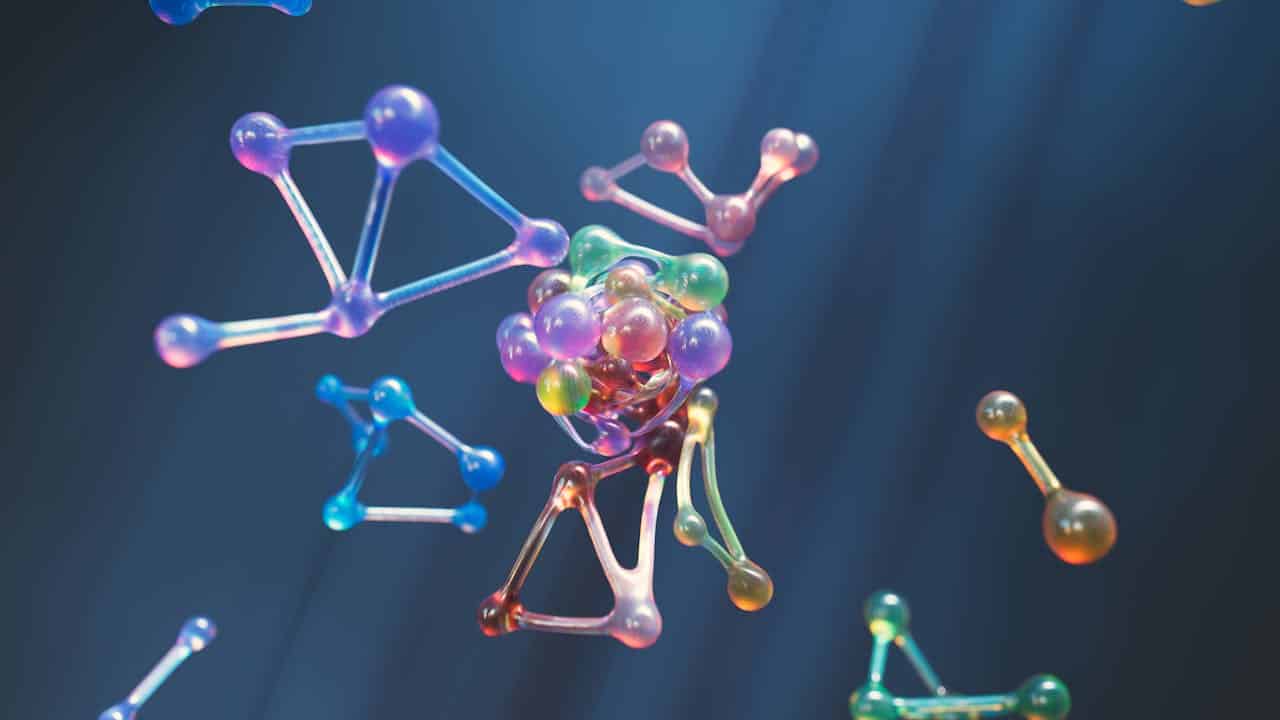Imagine discovering that your morning coffee cup, the houseplant on your windowsill, and even the atoms in your smartphone possess some form of consciousness. While this might sound like science fiction, a growing number of serious scientists and philosophers are investigating whether awareness extends far beyond human brains into the very fabric of reality itself. An ancient theory that once seemed relegated to mystical thinking is experiencing a remarkable scientific renaissance, challenging everything we thought we knew about the nature of mind and matter.
Scientists Are Digging Into the Panpsychism Theory
Panpsychism, the theory that consciousness exists throughout the universe, traces its roots back over 2,500 years to ancient Greek philosophers who questioned the nature of awareness in all things. Thales of Miletus observed magnets moving iron and concluded they must possess souls, while Anaxagoras proposed that “everything contains a portion of mind.”
Greek Stoics envisioned the universe as a living entity animated by logos, a rational principle that connects all matter with a unifying life force. During the Renaissance, Giordano Bruno envisioned an infinite number of worlds, each possessing its soul, suggesting that consciousness permeated countless cosmic environments.
These ideas persisted through the centuries despite the dominance of scientific materialism. Gottfried Wilhelm Leibniz introduced the concept of “monads,” indivisible units that reflect the entire universe through their infinitesimal perceptions. By the late 19th century, thinkers such as William James and Alfred North Whitehead had revived the notion that feeling represents an intrinsic part of nature’s fabric.
Charles Darwin’s evolutionary insights further supported this perspective. If consciousness develops gradually through natural processes, it never truly begins at a single point; instead, it intensifies as matter becomes more organized into complex systems.
Modern Scientists Are Building the Case
Contemporary neuroscience confronts consciousness puzzles with sophisticated tools and theories that lend credibility to panpsychist ideas. Giulio Tononi’s Integrated Information Theory (IIT), proposed in 2004, suggests consciousness corresponds to the amount of integrated information a system generates, measured by the symbol Φ (phi).
High Φ values indicate richer, more unified experiences, while low Φ denotes dimmer awareness. IIT views consciousness as intrinsic and independent of outside observers, implying that it could emerge in any sufficiently integrated system, whether an animal brain, an artificial network, or a silicon chip.

Current research involves experiments that stimulate the brain and create computer models to test IIT’s predictions. Studies show that deep anesthesia, which suppresses consciousness, correlates with sharp declines in integrated information. These preliminary results provide empirical weight supporting the theory’s mathematical framework.
IIT aims to characterize the quality of subjective experience by showing how different configurations of integrated information correspond to various qualia, such as color, taste, or pain sensations. If valid, IIT would provide a scientific foundation for panpsychism by demonstrating consciousness extends beyond biology.
Your Brain Might Not Be Special After All
Traditional neuroscience assumes that consciousness emerges from complex neural networks that reach critical thresholds of activity and connectivity. However, this approach struggles to explain why any physical process should generate subjective experience rather than simply processing information without inner awareness.
IIT challenges this assumption by suggesting consciousness represents a fundamental property of information integration rather than an emergent byproduct of neural complexity. Systems with appropriate informational structure could theoretically experience awareness regardless of their biological or artificial nature.
This perspective implies that consciousness exists on a spectrum rather than appearing suddenly at specific complexity levels. Simple systems might possess minimal awareness that combines and intensifies as organizational complexity increases through evolution or engineering.
Research into machine consciousness becomes particularly relevant under this framework. If consciousness depends on information integration patterns rather than biological substrates, artificial systems could theoretically achieve genuine awareness given proper design and sufficient computational power.
Quantum Mechanics Adds Another Twist
Physicist Roger Penrose and anesthesiologist Stuart Hameroff developed the Orchestrated Objective Reduction (Orch-OR) theory, which links consciousness to quantum mechanical processes within neuronal microtubules. Their model suggests quantum computations occur when enough microtubules become entangled, creating awareness moments influenced by quantum gravity.
Many scientists remain skeptical, arguing that brain environments are too warm and noisy for sustained quantum coherence. Critics question whether microtubules can function as quantum bits, given the inherent instability and thermal interference in biological systems.
Supporters point to quantum effects discovered in photosynthesis at room temperature, suggesting that nature may exploit similar mechanisms in the generation of consciousness. Quantum biology research continues to reveal unexpected quantum phenomena in living systems that were previously thought to be impossible.
While definitive proof for Orch-OR remains elusive, the theory maintains dialogue between physics and consciousness studies. Quantum approaches suggest that consciousness might involve fundamental physical processes operating at scales smaller than those investigated by traditional neuroscience.
Plants and Animals Join the Consciousness Club
If panpsychism proves correct, consciousness exists across biological kingdoms in varying degrees of complexity and integration. Plant behavior studies reveal sophisticated responses to environmental stimuli, suggesting forms of awareness beyond simple mechanical reactions.
Trees communicate through underground fungal networks, sharing nutrients and warning each other about potential threats. Plants demonstrate learning behaviors, memory formation, and decision-making processes that parallel animal cognition in surprising ways.
Animal consciousness research continues expanding our understanding of awareness in non-human species. Dolphins, elephants, and great apes exhibit self-recognition, tool use, and complex social cognition, indicating rich inner experiences.
Recent studies suggest consciousness might extend to much simpler organisms than previously imagined. Bees exhibit emotional states and decision-making processes, while even single-celled organisms display adaptive behaviors that hint at a primitive form of awareness.

The Tricky Puzzle of Blending Tiny Minds
Panpsychism faces a significant philosophical challenge known as the combination problem: if elementary particles possess minimal consciousness, how do countless tiny experiences combine to form a unified human awareness? No widely accepted explanation exists for this fundamental question.
Critics argue that adding billions of micro-experiences should create chaotic mental noise rather than coherent consciousness. The transition from particle-level awareness to integrated human experience remains mysterious under panpsychist frameworks.
Supporters propose various solutions involving information integration, quantum entanglement, or emergent properties that could explain how simple experiences combine into complex awareness. However, these explanations remain largely theoretical without empirical validation.
The combination problem represents panpsychism’s greatest challenge, requiring breakthrough insights in both neuroscience and physics to be satisfactorily resolved. Solutions might revolutionize our understanding of both consciousness and fundamental physics.
Health and Healing Get a New Spin
If consciousness extends throughout biological systems, medical approaches might need to consider awareness at cellular and molecular levels. Understanding how consciousness affects healing, immune responses, and overall health could transform therapeutic strategies.
Anesthesia research becomes particularly relevant under panpsychist frameworks. If consciousness exists at multiple levels of biological organization, adequate anesthesia might require targeting awareness at various scales rather than just suppressing neural activity.
Mind-body medicine gains theoretical support if consciousness permeates biological systems rather than emerging solely from brain activity. Meditation, stress reduction, and holistic healing approaches might work by influencing consciousness at cellular and systemic levels.
Research into placebo effects and psychosomatic phenomena could benefit from panpsychist perspectives that acknowledge consciousness throughout the body. Understanding how awareness affects physical processes might explain many mysterious aspects of health and healing.
My Personal RX on Consciousness and Wellbeing
As a physician who has witnessed the profound connections between mind and body throughout my career, consciousness research is fascinating because it challenges our fundamental assumptions about awareness and healing. If consciousness extends beyond our brains into our cells, organs, and the molecules that comprise our bodies, this could revolutionize our approach to health and wellness. When patients ask about mind-body connections, I emphasize that we’re only beginning to understand how consciousness affects physical processes.
- Practice mindful awareness of your body’s signals: Pay attention to subtle sensations, energy levels, and physical responses that may reflect consciousness at the cellular level throughout your biological systems.
- Support cellular health through conscious nutrition choices: Choose foods that nourish your body at the molecular level, recognizing that every cell contributes to your overall health and potentially your well-being.
- Consider meditation as a form of cellular communication: utilize mindfulness practices to influence consciousness at multiple levels of biological organization, from neurons to immune cells to digestive bacteria.
- Optimize gut-brain consciousness connections: Support your enteric nervous system with MindBiotic supplements, which contain probiotics and adaptogens that may enhance awareness and communication between different body systems.
- Prepare meals that honor bodily consciousness: Use recipes from Mindful Meals cookbook that emphasize whole, natural ingredients that support cellular function and potentially cellular awareness throughout your body.
- Explore the consciousness of your breathing: Practice conscious breathing techniques that acknowledge the intelligence of your respiratory system and its role in fostering mind-body awareness.
- Respect your body’s natural rhythms: Honor circadian cycles, sleep patterns, and energy fluctuations as expressions of consciousness operating at biological levels beyond conscious thought.
- Cultivate awareness during healing: When recovering from illness or injury, engage consciously with your body’s healing processes, potentially supporting recovery through focused attention and intention.
- Consider the consciousness of your environment: Recognize that if consciousness extends throughout matter, your physical environment might influence your well-being in ways beyond current scientific understanding.
Sources:
Rosenberg, T., Gal-Ben-Ari, S., Dieterich, D. C., Kreutz, M. R., Ziv, N. E., Gundelfinger, E. D., & Rosenblum, K. (2014). The roles of protein expression in synaptic plasticity and memory consolidation. Frontiers in Molecular Neuroscience, 7. https://doi.org/10.3389/fnmol.2014.00086
Tononi, G., Boly, M., Massimini, M., & Koch, C. (2016). Integrated information theory: from consciousness to its physical substrate. Nature Reviews. Neuroscience, 17(7), 450–461. https://doi.org/10.1038/nrn.2016.44











 Subscribe to Ask Dr. Nandi YouTube Channel
Subscribe to Ask Dr. Nandi YouTube Channel










